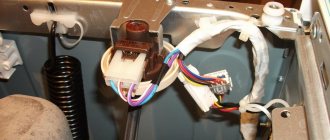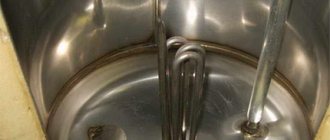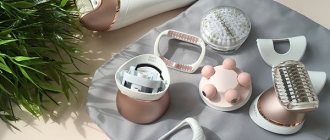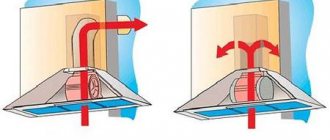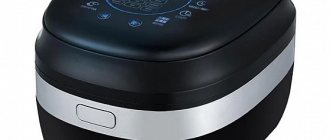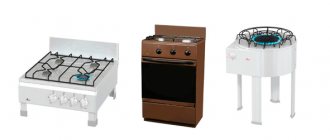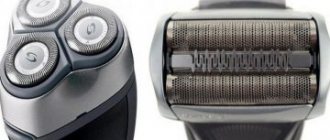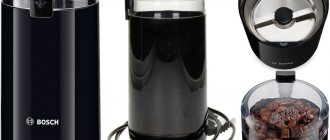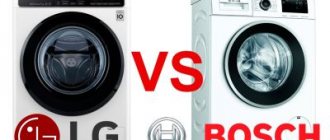Every modern kitchen is equipped with a hob. Today you can choose various types of kitchen appliances, which in their characteristics will not be inferior to a conventional gas or electric stove. It should not only be functional and visually fit into the overall design of the room, but also be practical and easy to clean. The process of preparing various dishes is constantly taking place here, so there is a high probability of stains and contamination. When choosing a model of kitchen equipment, you must take into account how it will be cleaned. The most common and easy-to-clean materials are enamel and glass.
Modern hob
What is enamelled steel?
This coating material is often used in the production of hobs, the operating principle of which is based on the use of gas. Previously, you could find an enameled electric stove, but such equipment has not been produced for a long time and is rarely left anywhere.
On the modern market you can find a huge number of different types of kitchen appliances for cooking. It differs in shape, color, functional features or surface material.
Variety of enameled surfaces
Important: enameled steel in the manufacture of hobs can be found in every manufacturer of household appliances. The main thing is that before purchasing, decide on the company where exactly it is worth purchasing a kitchen product that will serve reliably and efficiently for more than one year.
Consumers appreciate and very often choose an enameled surface due to the large number of positive qualities that it possesses. These include:
- Appearance. Manufacturers try to diversify their product range as much as possible, so they produce hobs in various colors and shades so that the product can organically fit into the space of any kitchen and design.
- Low price. The cost of the equipment is considered to be at an acceptable level for most consumers.
- Quality. Many consumers think that if the price of equipment is low, then this indicates unreliability and impracticality. But this is a mistaken opinion. The enameled surface of the hob is resistant to high temperatures and is not destroyed by constant exposure.
- Easy to care for. With constant proper cleaning, household appliances will last without breakdowns for a long period of time.
Easy enamel care
- Practicality. It is considered one of the most important distinctive features of kitchen equipment, where the process of cooking constantly occurs, that is, the risk of severely staining the surface increases significantly. But touch marks, fingerprints or splashes of water do not remain on the enamel surface, which guarantees the flawless appearance of the product for a long time.
Perfectly cleaned enamel
But besides the positive qualities, there are several points that should be taken into account before buying equipment. First of all, a hob made of this material is very resistant to heavy and sharp objects that fall on its surface. This can lead to the formation of cracks and chips, which will subsequently spoil the appearance of the equipment, as well as cause the accumulation of dirt and food debris on the surface.
Pros and cons of tempered glass
The principle of manufacturing this material is simple, but it is thanks to it that glass becomes incredibly durable. The maximum possible heating of the material is carried out, after which it is subjected to extreme cooling. This is precisely why it is almost impossible to break or damage it with any object other than metal. And it is precisely because of this that it has become so popular and is used not only for hobs, but also in the installation of double-glazed windows and partitions.
Tempered glass hob
There is no need to remove the burners to clean the surface. It is enough to walk over the surface with a dry towel (wet cleaning will be a little more problematic, since stains may remain). It will be difficult to get burns, since the glass will not heat up during the cooking process. The cost of such products is more than affordable, and in terms of quality they are in no way inferior to their ceramic counterparts.
| Advantages | Flaws |
| The material is incredibly durable and resistant to mechanical damage | This surface cannot be cut or drilled. |
| Excellent flexibility | The edges may develop chips over time. |
| Thermal resistance | Difficulty cleaning (stains) |
Glass ceramic hob cover
This material is usually used for the production of electric, gas, and modern induction panels. It is slightly more expensive than enamel, but the high price is fully justified. The main advantages of glass-ceramic products include:
- Perfectly flat and smooth surface.
Glass ceramic coating
- Conducts heat in a targeted manner, meaning that the appliance does not heat up completely during cooking. This happens only in the place where it is needed. For example, under a saucepan or frying pan. Thanks to this property, food cooks much faster, while using much less energy.
Heating food
- Easy to clean and clean. If the stain is fresh, then all you need to remove it is a regular sponge. For more serious contamination, the use of special scrapers is allowed.
Surface cleaning
- A variety of color solutions, as well as design implementations. The most popular models are made in black, white and cream. In addition, a pattern can also be applied to the surface. Such equipment will decorate any kitchen.
But despite all the positive qualities, the material has its drawbacks. First of all, these include the fragility of household appliances.
Important: if an object weighing two or more kilograms is dropped onto the surface of the hob, this may cause the equipment to crack or completely crack.
Glass ceramics also respond to sharp objects falling even with a small weight. This usually occurs due to the knife falling with the tip pointing down. Therefore, before purchasing a hob made from this material, you should be prepared for the fact that you need to be extremely careful and attentive with it so that you don’t have to buy new equipment soon.
Many manufacturers are trying to find a way out of this situation by making their equipment more durable and reliable. One of these solutions was to encase the glass-ceramic surface in a special metal frame.
One of the unusual features of the glass-ceramic surface is the reaction to sweet foods. For example, spilling sugar on a cooktop may leave small pits or indentations in the material. Therefore, all sweet products from the surface of the equipment must be removed immediately.
Cracks can appear on the surface as a result of a sharp temperature change: if you immediately place a pan from the refrigerator on a glass-ceramic stove and turn it on.
Important: before buying a glass-ceramic hob, you should consider all its strengths and weaknesses in order to know what you will have to face and not be disappointed in the technology.
In addition, glass-ceramic products are slightly more expensive than enameled hobs. When purchasing this equipment, you should also remember to purchase special dishes for it. For example, stainless steel, aluminum, cast iron or enamel may simply not be accepted by modern equipment, which means that cooking food in them will simply become impossible. You will also need to purchase brushes and cleaning products for this material. This will also incur additional costs.
Not all types of cookware are suitable for glass ceramics
Tempered glass: advantages and disadvantages
Irrefutable advantages of tempered glass:
- excellent resistance to thermal influences;
- relatively good degree of flexibility;
- strength of the material, which does not withstand mechanical shocks.
True, this hardened material also has imperfections:
- the edges of the surface are susceptible to chipping;
- a ban on processing glass after tempering, because it cannot be drilled and cut.
The way this material was made makes it very durable, because it was heated to a maximum temperature and then subjected to rapid cooling. Therefore, tempered glass cannot be broken; it can only be damaged by a metal object.
Glass hobs do not require special care and look sophisticated.
Thanks to this property, it has become a popular raw material for creating office partitions and double-glazed windows.
To clean them, you do not need to remove the burners and difficultly remove stuck dirt; splashed drops can be wiped from above without effort.
Video review of this type of hob:
Standing at the stove, the housewife does not risk getting burns - the glass panel does not heat up. It is inexpensive, while not inferior in quality to a ceramic surface.
How to properly care for a glass-ceramic surface?
If we compare two materials such as enamel and glass ceramics, then in the first case it is undoubtedly easier to care for the product. To restore order on an enameled stove, simply go over it with a damp sponge. For stronger and more stubborn stains, you can scrub with a brush. The surface will not be damaged and after a few minutes it will be clean and smooth again.
But glass ceramics need careful and careful cleaning. It is also worth remembering that you will have to remove not only traces from cooking, but also from fingers, splashes of water or simple dust. In general, it is believed that this material is more easily soiled than enamel. Therefore, to bring this household appliance into perfect condition, you must follow the following rules:
- you cannot use various sponges and rags that are made from rough fabrics and materials;
- The surface can only be cleaned with a special cloth, which is intended only for glass;
- if there are pieces of food or some kind of dirt left on the stove, it is better to wipe it off with a special scraper;
- can only be washed with glass ceramic cleaner;
- Do not use any powders that are in dry form during the cleaning process.
It is also worth remembering that household appliances made from this material are very fragile, so it is better not to hang cabinets and other kitchen utensils above them. This will minimize the risk of any object falling onto the surface of the stove.
Why can tempered glass become an alternative to glass ceramics?
Technologies do not stand still. Every year more and more modern equipment is invented and produced. It becomes not only functional and stylish, but also greatly simplifies the life of a modern person. More recently, glass-ceramic hobs were designed, and today they are being replaced by surfaces made of tempered glass.
Every year they become more and more popular, as they have already been able to establish themselves as a high-quality, reliable and beautiful material. It will fit perfectly among the interior elements of any kitchen, making it brighter and different from others.
The main advantages of tempered glass as a hob surface are:
- heat resistance;
- resistance to temperature changes;
- flexibility. The material can adapt to any uneven surface;
- strength. The product is not afraid of falling objects and other mechanical impacts;
- practicality. No special effort or care is required when cleaning.
Taking into account all these characteristics, as well as positive and negative aspects, each person will be able to choose for himself which hob is better - glass ceramics, tempered glass or enamel.
Modern hob
Which is stronger?
Electric cooktops and ranges do not use tempered glass. The reason is simple: in such stoves, the glass itself is directly heated, and the maximum temperature that this glass can withstand is lower than the maximum heating provided by electric burners. Glass ceramics can withstand temperatures 2 times higher than conventional tempered glass. This is approximately 750 degrees.
This is the first and important advantage of glass ceramics versus tempered glass. However, in practical use on a gas stove, this advantage disappears, because here it is not the glass or ceramics that is heated, but the burner itself. The burner is located above the surface, so both glass ceramics and tempered glass can easily withstand the temperature.
In terms of mechanical strength, both materials are close to each other, although glass ceramics is slightly superior to its competitor. Both tempered glass and glass-ceramic surfaces can be broken. However, glass ceramics breaks like ordinary glass - into pieces. Tempered glass becomes cracked (similar to car windows).
Features of stainless steel surfaces
Stainless steel is considered a practical and reliable material for hobs. It can withstand large impacts and heavy weight. The stove can be either gas or electric.
Gas hob
Gas hob
Other features of surfaces made of this material:
- from 2 to 4 burners. This allows you to choose a model for a large family, when you need to cook a lot, or for a small one. Typically, burners have different power and area;
- the surface can be matte or mirror;
- gas devices are equipped with a cast iron grate, both solid and separate. The second option is more convenient when cleaning;
- switching burners on stainless steel appliances can be mechanical or electronic;
- electric models will heat up quickly but take a long time to cool down; they are considered more economical.
Note that the stainless steel version is easy to clean and is not afraid of aggressive and abrasive cleaning agents. Even if carbon deposits remain on the stove, it can be easily removed.
Hobs
Modern hobs are divided into two main groups - electric and gas. If your apartment has mains gas and powerful electrical wiring, then there are no restrictions on the choice of the type of hob. According to statistics, both types of hobs are in approximately equal demand. It is not uncommon for an electric oven to sit comfortably next to a gas hob in a modern kitchen. There are combination hobs on sale, which have both gas burners and electric burners with a ratio of 3:1 or 2:2.
Electric and gas panels, in turn, are divided into dependent and independent. The operation of dependent working panels is impossible without an oven, because the “control panel” for its burners is located on the body of the oven. These hobs are not compatible with every oven, even if it is from the same manufacturer. The independent panel and oven operate completely autonomously from each other. An independent oven does not have to be installed directly under the hob; if desired, it can be built into a cabinet located at eye level, which will certainly make the housewife’s work easier - she won’t have to bend over backwards to check whether the food is burnt in the oven. In addition, by choosing a set of independent appliances, you can choose exactly the hob and exactly the oven that you like best. The downside is that a set of independent oven + independent work surface is more expensive than the same “dependent” set.
Features of glass hobs
More modern stoves are made of glass ceramics. They have a stylish look and fit well into trendy kitchen interiors.
Features and advantages of these options:
- can conduct heat in a targeted manner - not the entire surface will be heated, but only the cooking area. This allows significant energy savings;
- have modal cooking zones that adjust to the size of the pot or pan;
- The shiny surface makes the device more compact.
Glass-ceramic models also have disadvantages: not all cookware is suitable. Products made of aluminum and enamel simply will not heat up; you will have to change your cooking utensils. Another disadvantage of such models is low strength. They are afraid of mechanical damage and scratches. Touch marks and smears are visible, so you will have to wipe them frequently.
When caring for glass panels, special attention is required. Do not use hard sponges or abrasive substances; only special liquid care compositions are suitable.
A good alternative to glass ceramics is tempered glass, which has a stylish and chic look. In addition, it has a more reliable and strong structure.
Another advantage is good heat-resistant characteristics. The device is not afraid of temperature changes, heavy dishes and other mechanical influences. The material is used mainly for gas stoves.
Glass ceramic hob
This is probably the most stylish and luxurious material for your kitchen. A panel made of this material not only has excellent heat-resistant functions, but also looks stylish. However, such material requires very careful use and constant care.
Important! Glass ceramics are used for gas and electric surfaces, as well as modern induction cookers. A glass ceramic hob will fit into any interior and will last a long time with proper care.
Features of glass-ceramic plates:
- The main advantage of glass ceramics is the ability to conduct heat in a targeted manner. So, not the entire surface is heated, but only the area necessary for cooking, which is better than stainless steel or enamel. For this reason, glass ceramics are much more economical. Food heats up faster and consumes significantly less electricity.
- A big plus is the modal cooking zones. If you cook food in a small saucepan, then only the area under it is turned on. But if you put a roasting pan on this burner, the entire zone will work fully. The control of such a system can be manual or intelligent – autofocus (AF) function.
- Not every cookware is suitable for glass-ceramic surfaces. For example, pans made of aluminum or enamel may simply not be read by the device. Therefore, the purchase of a stove is most often accompanied by the purchase of new cookware.
- A huge disadvantage of a glass-ceramic surface is its high price. As a rule, even the simplest models are significantly higher in price than even the best stainless steel plates. In addition, you will have to spend a lot of money on related products for caring for the hob - special brushes, detergents.
- The glass-ceramic surface cannot boast of strength and reliability. This material is very sensitive to mechanical damage. A hit from a pan or a dropped knife with the tip pointing down can damage the heating element.
- Temperature changes also damage the surface. For example, if you put dishes from the refrigerator on the stove and then turn it on, cracks may appear on the surface.
Caring for a glass ceramic hob
When comparing which is better - stainless steel or glass-ceramics, you need to understand that a glass-ceramic stove requires very careful and careful cleaning. In addition, the surface itself is incredibly easily soiled - fingerprints, drops of water, small specks of dust are very noticeable on the matte black surface.
You should adhere to some points when caring for glass ceramics:
- Under no circumstances should sponges, rags or brushes made of rough materials be used. It is advisable to get a special rag for cleaning glass. It is most convenient to remove food debris and hard dirt using a special scraper.
- Choose a detergent exclusively for such a surface, and, of course, you cannot use dry formulations - this will leave severe abrasions and marks on the surface.
- It is not recommended to hang kitchen utensils directly above the stove. If even a light object is dropped, cracks can form, which will subsequently lead to expensive repairs or replacement of the surface.
Important! Often, without deciding which hob is better - stainless steel or glass, they choose the so-called “gas on glass”. This is a glass-ceramic stove that uses gas for heating. Without a doubt, cooking on such a surface is a pleasure, because the flame creates a very beautiful effect, and food is cooked quickly and efficiently. But such a surface is the most whimsical. Caring for it must be extremely careful - any crack will lead to gas leakage into the apartment.
Features of enamel coatings
Enameled coatings are more familiar to most housewives. They are affordable and come in a variety of colors. They can be either gas or electric.
Enameled hob
Enameled hob
Advantages:
- diverse appearance will suit any kitchen design;
- good quality, high temperature resistance;
- Easy to care for - can be cleaned with mild detergents without fear of scratches.
Practical models are suitable for frequent cooking. Water splashes, fingerprints, and streaks will not be visible on them.
With good care and careful handling, such devices will last a long time.
Despite the large number of advantages, enamel panels have their disadvantages. If heavy objects fall, cracks and chips may occur. Cast iron gratings are provided to protect the coatings. In addition, they should not be cleaned with iron sponges, which can scratch the enamel.
Comparison of enamel, stainless steel and glass
Having examined and compared the main options for hobs, we can conclude that each has pros and cons:
- stainless steel models are the most reliable and practical, they are not afraid of mechanical loads and heavy weight;
- glass options are less durable, but they have an impressive appearance;
- enamel panels are the middle class in terms of quality and external indicators.
There are a few things to consider when choosing the right device. If there is gas in the house, then it is better to give preference to reliable stainless steel models. In cases where you plan to use electricity, options made of glass ceramics or enamel are suitable.
It is important to take into account the specifics of cleaning behind the device. If the stove will be used rarely or you plan to cook for a small family, it is better to choose a glass-ceramic panel. This option is also suitable when you have time to constantly clean the surface. For a large family, it is better to choose a stainless steel model.
It is worth paying attention to the appearance of the panels. Manufacturers offer many interesting options in any segment.
Thus, the choice of hob is related to personal preferences and conditions of use. In many cases, the determining factor is the price of the product. The most expensive are glass options, followed by enamel models, and affordable ones are stainless steel plates.
Catalog of hobs, read reviews and compare prices.
Let's sum it up
The most controversial hob is the glass ceramic model. Such kitchen equipment can be recommended to those for whom the appearance of the room and kitchen unit is more important than practicality. No matter how careful you are, the risk of damaging the surface is quite high. If you spend a lot of time cooking, then it is better to consider other options.
If you're on a budget, stainless steel is the ideal hob. Excellent reliability and strength, as well as durability and resistance to mechanical damage make such models the most in demand and popular. In addition, they do not require special care or expensive chemicals, and the choice between matte and mirror surfaces is often sufficient for ordinary citizens.
Cooking surfaces made of tempered glass are the dream of any housewife. They are practical, reliable, durable, versatile and very beautiful. If the family budget allows such expenses, then there is simply no worthy alternative to these models. They combine the advantages of stainless steel and glass ceramics without their disadvantages.
Enameled steel
Glass or enamel: which hob surface is better?
The most common hob materials today are enamel and glass ceramics. True, the first one is most in demand among gas stoves, since electric enamel pancakes have practically sunk into oblivion. So, if a gas hob is right for you, pay attention to the enameled steel surface. All modern manufacturers have such options and they differ in a wide range of colors. How do you like the surface of the shade with the poetic name “oat” that BEKO offers? Or a copper hob from Smeg? Of course, the line also includes the more familiar white, black, brown and ivory - in a word, here the designer’s soul can go wild.
But this is appearance. What about the content of enameled steel as a material? First of all, many people love it for its low price, for which they get a heat-resistant surface that, with proper care, will last a long time. At the same time, it is easy to care for, no fingers remain on it, and no traces of moisture are visible. However, an enamel hob is afraid of heavy falling objects - chips may form. By the way, the surface created by hot enameling is considered a more fragile material. But the powder polymer coating is not afraid of a falling pan from the top shelf. However, this type of enamel can be damaged by a drop of lemon juice or acid, and its color coating is not as durable as with hot enameling.
Stainless steel hob
This material is very practical. It can withstand significant weight and shock. In addition, there are electric and gas hobs. Thanks to this, you can choose a surface taking into account the type of energy used in the apartment. However, you should choose a hob made of stainless steel or glass only after studying all the features of the model and their functions.
Note! For a hob made of stainless metal, the composition of the alloy and its quality are important.
They say that with more chromium in the composition, its quality will be better. New panel models are offered with mirror and matte surfaces. You should choose the option that suits you, taking into account the design of the room and personal preferences.
Glass ceramic coating
If we consider electric hobs, today glass ceramics rule the roost. Of course, they are not as affordable as an enamel surface, but the game is worth the candle. An absolutely flat, smooth surface cools and heats up quickly, looks stylish and any dirt can be removed by simply wiping the surface with a sponge. For more complex, not fresh stains, you can use a special scraper.+
Glass or enamel: which hob surface is better?
A significant disadvantage of glass-ceramic panels is their fragility. If you drop any object weighing over 2 kilograms onto such a surface, it may break. Also, a ceramic hob is resistant to pinpoint impacts, since a knife falling with its tip down will inevitably cause a chip. The way out of this situation, of course, is careful handling of household appliances. Manufacturers also managed to make glass-ceramic surfaces more durable by enclosing them in a metal frame. For example, such options are offered by Bosch and Siemens.
Another enemy of glass ceramics is sweets. When sugar hits the surface, it very quickly affects the structure of the material and pits form underneath it. Therefore, any spillage of sweets must be removed immediately. However, do not think that we are here listing the disadvantages of a glass-ceramic hob. We simply draw your attention to how you need to handle it in order to appreciate all the benefits.
Finally, how can we fail to note that a glass-ceramic hob may well become a decoration for your kitchen set, because its laconic, stylish design and excellent color scheme will not go unnoticed. The most common shades of glass ceramics are black, white and cream. It can be plain or even patterned. However, professionals advise choosing textures with a fine mesh or speckled so that minor dirt is not too visible on the surface.
Go to the catalog of hobs.
Which hob is better: glass or enamel?
A well-made dish and served on a festive table is a real holiday. Everyone loves to eat delicious food often. Housewives like it when they eat what they have prepared with appetite and then say thank you very much. And for this purpose, a whole kitchen cabinet with a workplace and its own special equipment is organized in the kitchen. As part of such equipment, a hob is installed. There are different types of equipment, differing in type of work and functionality. Hobs are made of different materials and we will look at which surface is better, enameled, stainless or glass.
Characteristics of an enameled surface (pros, cons, description)
Enameled surfaces, used in the manufacture of kitchen appliances, are more often found in gas stoves. In the electric version they are practically not used, only in outdated inexpensive models where heating pancakes are used. Most of these models are found among gas household kitchen appliances. Their execution offers a huge selection of colors and shapes.
They have a low price, with the same functional characteristics, as well as good resistance to high temperatures.
During operation, it will be necessary to ensure careful care of such coatings, since this is a rather fragile material. When a heavy object, for example a pan, falls, chips will inevitably appear.
Good quality can be highlighted - it is practical to use; traces left by fine dirt and fingerprints are not visible on the panel.
As a result we get:
+ Wide selection of colors and models, practicality in application and use, low cost.
— The fragility of the coating, and to be honest, it’s already old-fashioned.
Characteristics of glass ceramics
The glass ceramic hob is quite new and modern in the field of household kitchen appliances. It is most widely and universally used in the production of all types of electric stoves, having established itself as a simple and unpretentious material for preparing food.
The cost is higher, but in preparation, the convenience compensates for the increased price. Completely smooth, heats up and cools down instantly, it has a modern appearance. But if something spills, it must be immediately removed from the surface, otherwise cleaning will be difficult. And don’t even think about dropping anything on her, she doesn’t like it. Glass ceramics are quite fragile to heavy and very sharp objects. Until now, manufacturers are working to enhance this quality, selecting and applying different solutions, making the design better. Huge selection of colors and patterns. It’s impossible to even imagine how many there are, and this makes her the most attractive.
Eventually:
+ Modern stylish look, completely smooth surface, heats up and cools down quickly;
— Not strong, difficult to clean under certain conditions, not the lowest price.
Stainless steel hob
This type of surface is used exclusively in gas-type panels. Among other things, it is distinguished by its efficiency and practicality. Easily gets rid of grease stains and pieces of burnt food. Many store-bought stainless surface care products are low cost and highly effective. Stainless steel is also resistant to mechanical damage except when exposed to abrasive materials and agents.
The disadvantages include a simple and not particularly stylish appearance.
Strained glass
Glass-ceramic hobs appeared on the market not so long ago. However, today stove manufacturers are offering consumers an excellent alternative to these stylish products. We are talking about models made of tempered glass, which harmoniously combine strength and reliability with grace and beauty.
The cooking surfaces in question have excellent heat resistance, but, unlike glass ceramics, they are resistant to sudden temperature fluctuations. In addition, they are distinguished by decent resistance to mechanical damage, and therefore do not require such careful treatment as their predecessors.
It should be noted that tempered glass hobs require professional installation. However, they perfectly adapt to the unevenness and imperfections of the countertop.
This equipment can be gas, electric or combined. At the same time, it is practically in no way inferior to its stainless steel counterparts, and has advantages. These include the fact that the surface material practically does not heat up where it is not needed. The only “minus” is the rather high cost.
Strained glass
Tempered glass, a new trend in household kitchen appliances, based on efficiency and functionality. It is mainly used in gas stoves. This coating replaced glass ceramics. Although in terms of their basic parameters, glass ceramics and tempered glass are very similar to each other, there are still differences. Resistance to sudden temperature changes, breaking into small, non-sharp pieces if damaged, not subject to minor scratches, does not chip when dropped by sharp objects, easy to clean, relatively low cost.
There is a drawback - the fragility of the product around the edges.
We get:
+ Not a high price, lower, with a glass-ceramic surface, temperature control, safety, scratch resistance.
— Fragility at the edges; organic model look, not used on all slabs.
Advantages and disadvantages of glass ceramics
Glass ceramics are slightly stronger than tempered glass. It is less susceptible to changes in high temperatures and has high heat resistance. These are the advantages.
There are also disadvantages : targeted strikes are very painful for her. If you are not careful with the glass-ceramic surface, scratches may appear on it. It is advisable to use expensive dishes with a perfectly flat bottom, otherwise scratches will be visible, and the appearance will suffer greatly from this. Finally, glass ceramics are expensive, and a gas stove with such a surface will cost significantly more than a stove with the same characteristics, but with a tempered glass surface.
